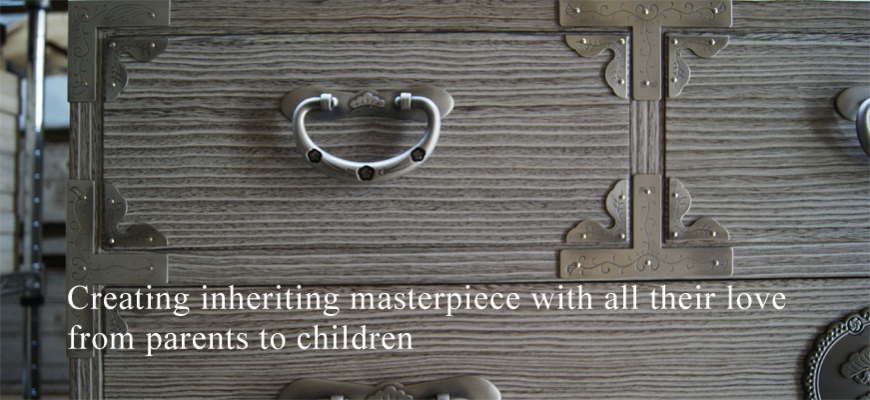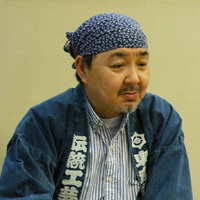
Haruo Katayama
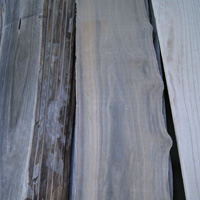
Paulownia-wood kept in the atelier
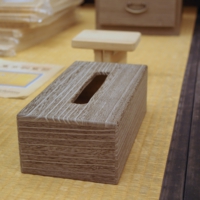
Small items are also made by using the end material of the Kiri Tansu.

Cool signboard is of course made from paulownia-wood
What is Tokyo-style Kiri Tansu?
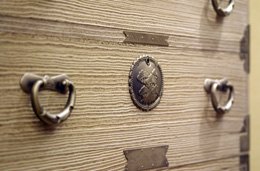
Don’t forget to work fun.
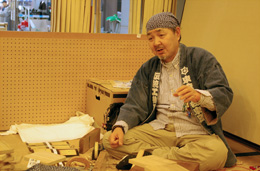
Mismatch representation came into fashion once before. Like putting Japanese culture into western style culture, things would be fun when things that first seems not to be fitted, became together. We are always trying not to forget these fun. Things would be boring if we only do what we should do. Off course, we are making things for the customers but not only that, the important thing is to propose what we think is fun and actually making it. However, to get in touch with new things are difficult since we don’t have much time.
Why did he came up to be a Kiri Tansu craftsman?
Could you tell us about why you decided to become Kiri Tansu craftsman?
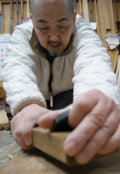
About “Kiri Tansu”
Could you tell us about the feature of Kiri Tansu?
One of the best feature is that the wood used is lighter than the usual ones. Since these items often to be inherited after marriage, the simplicity to carry these items were important. In the old days, like a palanquin, Chest of Drawers were carried by using poles. Therefore Kiri Tansu used to have metal fittings to put the poles in. When people get married, they usually used this poles and carried for a long distance. Therefore, we put “sao (poles in japanese)” in the end of the numbers when we count the chest of drawers. Though, it is not used often these days.
Also, paulownia (“Kiri”) is stronger to deal with moisture and also insects can be more avoided to come in than the usual wood. Since Japan has four seasons, in rainy seasons, chest of drawers will get damaged because of the humidity. When humidity get higher, paulownia get expanded and fills the blank spaces among the wood. This allows to save the clothes inside the chest of drawers. Another feature is that Kiri Tansu helps to prevent the spread of fire. It is strong with fire and it burns slowly. Since the wood has high density, water and fire are difficult to come inside.
Is it an idea from the old days to use paulownia to make chest of drawers?
In Edo era there were so many fire accidents that people said “fighting and fire are the great attractive in Edo”. If the fire doesn’t disappear, Kiri Tansu would get ruined. However, since the Kiri Tansu burns slowly, there were many cases when even the house get burned, Kiri Tansu survives like a black charcoal and the things inside get protected with no harm. It strongly protects from fire enough that if the things inside are clothes, you may not even need to wash those closes. In the old days, there were businesses called “UchiBakoYa” that keeps money inside the Kiri Tansu. Safe is mostly made by metal and metals don’t burn. However, the things inside would be ruined because of the heat inside the safe. On the other hand, if you use paulownia box, it decreases the heat and things inside can be protected. It is useful when people wants to keep important things. Even nowadays, expensive safe contains paulownia.
Is Kiri Tansu long-lasting?

Kiri Tansu in repairing
What kind of design is popular in Kiri Tansu ?
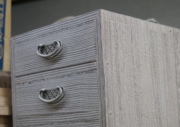
What kind of people buy Kiri Tansu?
Many of those are people who already had Kiri Tansu before. They usually got it after marriage and because the one they were using became damaged, people decide to buy another good product after 30-40 years. Therefore, many 50-60 years old people buy this product. In the old days, there were only Kiri Tansu as a chest of drawers. However, it wasn’t always made by paulownia and was sometimes made by other woods.
Are chest of drawers not made by paulownia called Kiri Tansu as well?
Yes, indeed. “SouKiri” is made by 100 percent paulownia, but in “YomoKiri”, paulownia is only used in sides and in other parts, different types of wood are used. The cheapest KiriTansu is called “MaeKiri” and only the front is made by paulownia. Other parts, we use different wood like Japanese cedar. We now often use imported wood like lauan. We print the grain to these wood and therefore this product has all the same grains.
About the work-in-process
How does Kiri Tansu be made?
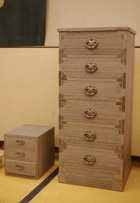
Tell us about the finishing process.
In the finishing, not to get interlocked grain, we shave and colorize the wood. Trees have grain and they are not supposed to be shaved in both ways. In coloring, we have “Tonokosiage” techniques from the old days. We also have other coloring technique that is to polish the wood after burning it. In this technique we first burn the wood that is not yet colorized by the burner and then drop the soot by the brash made by brass. After dropping the soot, we put the color in. It is more like putting the color inside the grain more than painting. First make a deep color and then spread it with the spatula. After that, make it waterproof and polish it using the wax. Like these processes there are many tasks to finish the work.
The way of this colorizing by burning the wood is called, “jidaiage”. In other places people call this “Yakigiri” but our techniques are the original in Tokyo. The name of the technique is referred to the instrument Koto that was first used to be burnt. My Grandfather first came up the idea from this and first burnt the chest of drawers and contrived to make it usable. This way of “jidaiage” has been used about 50 to 60 years after war.
What do you think is the best part to show your skills?
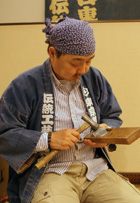
Tools
Tell us about the tools you are using.
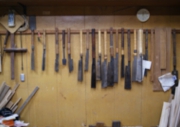

Haruo Katayama

Paulownia-wood kept in the atelier

Small items are also made by using the end material of the Kiri Tansu.
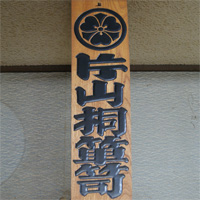
Cool signboard is of course made from paulownia-wood
What is Tokyo-style Kiri Tansu?

It was said that Kiri Tansu was started to be used in the Edo era. In the old days, people used to plant the paulownia tree when a girl was born and when the girl get married people made the chest of drawers from this paulownia and give it to the bride. At that era, there were so many people and the houses were made by tree many fire accident occurred. Therefore, Kiri Tansu was valuable because it was strong from fire.
The name “Tokyo-style Kiri Tansu” refer to the name of the union. Tokyo-style Kiri Tansu is a chest of drawers that meets the criterion Tokyo made. It used to have to be made in all Japanese paulownia but now, we use both Japanese paulownia and imported paulownia to make the best product. The real specialist should use the best materials regardless of the countries.
Don’t forget to work fun.

Mismatch representation came into fashion once before. Like putting Japanese culture into western style culture, things would be fun when things that first seems not to be fitted, became together. We are always trying not to forget these fun. Things would be boring if we only do what we should do. Off course, we are making things for the customers but not only that, the important thing is to propose what we think is fun and actually making it. However, to get in touch with new things are difficult since we don’t have much time.



